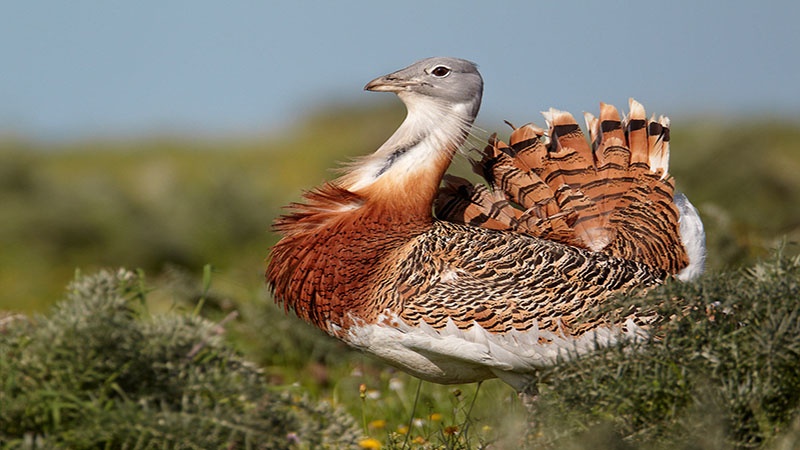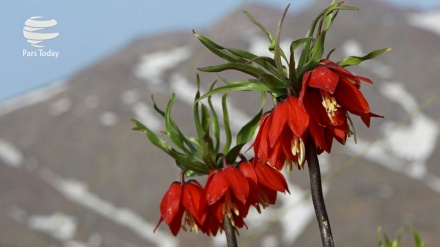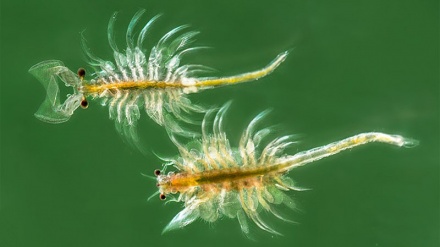Iran’s rare animal and plant species (14)
Welcome to this week’s episode of the series Iran’s Rare Animal and Plant Species.
Great bustard is one of the birds in Iran which has been pushed toward the verge of extinction in the recent years due to limitation of its natural habitats, and excessive poaching, and therefore this bird has been enlisted in the red list of the threatened species of the International Union for Conservation of Nature. Today, we introduce this rare bird.
Great bustard is one of the important bird species of Iran, which has a grand and beautiful body, highly resembling turkeys. Its body extends to a meter and its weight stands around sixteen kilograms. Its back feathers are brownish in color with black stripes, while the color of its abdomen is white. This bird maintains long and strong legs; each of which has three toes. These strong legs are highly important for the great bustards, given that they do not often fly. The male and female great bustards are very similar to each other, but the male great bustards usually have a larger physique. The male great bustard maintains brownish stripes across its chest. Great bustards are omnivorous but usually feed on buds, sprouts, leaves, and plant seeds.
Great bustards usually live in flat farmlands, such as wheat and alfalfa farms, and oftentimes build their nests in these farmlands throughout the spring season. However, they are also spotted in reaped farmlands in autumn and winter seasons. Great bustards are intelligent birds and do not easily fall prey to poachers. These birds are highly sensitive and in case of any change in their habitats, leave their living environment and migrate to other regions. Great bustards are very cautious and often run or hide whenever they feel a threat, instead of flying.
The mating season of great bustards begins in late winter and early spring, concurrent with rising temperatures and elongation of days. The male bird, in a bid to attract its mate opens up its tale’s feathers in the form of an umbrella, while also protruding its double chin. At this point in time, the bird tries to attract female great bustards via showcasing his power. The female great bustards reach puberty at the age of 2 to 3, with the male great bustards reaching puberty at the age of 4 to 5 years old. The female birds usually hatch their eggs in mid-spring. The female birds usually hatch 2 to 4 eggs, which are grey in color with large, dark spots. The weight of eggs often amounts to 150 grams. The great bustards’ offspring usually come out of their eggs after 25 to 27 days. After the mating season, the male great bustards practically play no role in raising their offspring. Meanwhile, the great bustards’ offspring are highly dependent on the female great bustard for a long while.
Great bustards are scattered from Iberian Peninsula to East China in Asia. However, the inappropriate living conditions have pushed this type of bird to the verge of extinction. According to experts, in the 19th Century, great bustards lived in England, Sweden, Denmark, Greece, and France. However, these birds went extinct in these countries, later on. The process of extinction of this bird type continued well into the 20th Century in large swathes of Eastern Europe, and great bustards also went extinct in Poland and former Yugoslavia. Thus, currently great bustards only live in Portugal, Spain, Russia, and Hungary across Europe.
The habitats of great bustards in Iran are located in western and northwestern regions of the country. One of the main habitats of great bustards in Iran is the environs of the city of Boukan in western Iran. Currently, this city is one of the last safe havens of this bird in Iran. Excessive poaching, destruction of habitats, and mechanization of farming are the most important threats posed against the existence of great bustards, which has in turn generated major concerns among the environmentalists. In the meantime, the hardworking rangers of Boukan Environment Protection Department are making utmost efforts to establish and maintain a shelter for these pretty birds.
MR/SS



